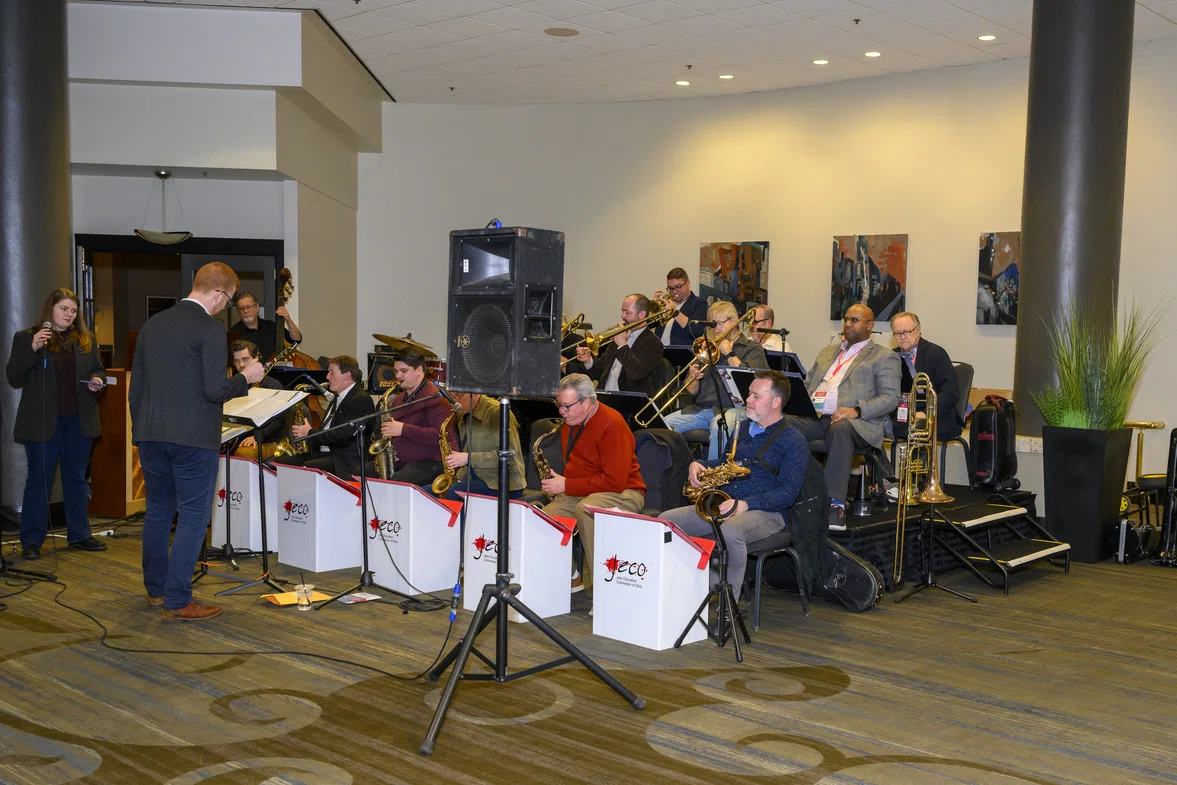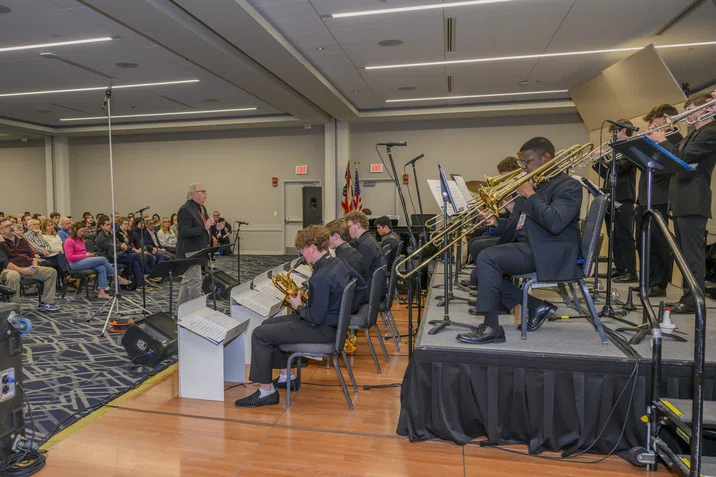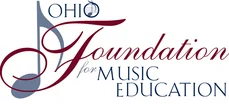©2023 Ohio Music Education Association



Allied Organizations
The First Steps to Getting Students to Improvise
The First Steps to Getting Students to Improvise
Mark A. Russo
JECO

Improvisation can be a daunting and tremendous undertaking for any beginning improviser. Chords like Bmi7(b5), G13(#11), F#7(#9), A7sus(b9)… the nomenclature alone can be overwhelming. But I’ve found in my teachings that you can get students to improvise with out them even knowing it. For now, I’m going to break it down into three parts: Technical, Melodic, and Creative.
As music educators, we are always teaching scales in some shape or form. Whether it’s in the form of ascending/descending diatonic scales, numbered patterns (i.e. 1235, 1324, 1231, etc.), or any form of minor scale they all apply to everyday major or minor scales.
Before I go any further, let me throw out disclaimer #1… NO ONE can become a great improviser unless they listen to jazz music. Period. There is so much more that comes from the “listening” aesthetic that we as improvisers get from recordings such as phrasing, time feel, style and nuances that can’t really be “taught” but more “imitated” (think learning a foreign language here for a minute… you’ll learn more of the language from being in Spain than Rosetta Stone could ever teach you). But we all have to learn to crawl before we walk. So let me give you a few tips and tricks I’ve used over the years to help get students started.
Major Scales
We teach these from day one. Two flats, one sharp, all 12 major scales… we can use them to our advantage. How many of you have taught your students major scales by rote? Or by using the exact pattern of W-W-H-W-W-W-H? Short term, who’s got time for that through all 12 keys? Long term, it becomes more ingrained (remember being in Spain verses Rosetta Stone). Jazz is a rote form of music by tradition and the more you teach your students by rote, the more they will retain over the long run. That being said lets take concert Bb. It’s probably the scale band students learn by memory first and you can do A LOT with that scale as a basis for beginning improvisation that will cover a great deal.
Disclaimer #2: Jump right in with your students in the learning process!! Just because WE are the educators, doesn’t mean we can’t LEARN as well.
A good place to start is with simple scale patterns. Have students play scales diatonically ascending and descending but don’t stop there. Pick a day/week/month where you do them in thirds (Bb-DC-Eb-D-F-Eb-G-F-A-G-Bb-A-C-Bb…. Bb-D-A-C-G-Bb-F-A-Eb-G-D-F-C-Eb-Bb) or 1235 patterns (Bb-C-D-F/C-D-Eb-G/D-Eb-F-A/ etc) or 4ths, 5ths, 6ths… what ever you can think of. And don’t always start them ascending. Anything you do out of the norm, will challenge them to LEARN the ins and outs of the scale both musically and technically. Also challenge them with chords build into the major scales. An exercise I have my students do is the following:
- Ascending/descending Major scale to the 9th (Bb-C-D-Eb-F-G-A-Bb-C) then ascending/descending major 9th arpeggio Bb-D-F-A-C-A-F-D-Bb
- Ascending major scale/ descending major 9th arpeggio Bb-C-D-Eb-F-G-A-Bb-C-A-F-D-Bb
- Descending major scale/ ascending major 9th arpeggio Bb-A-G-F-Eb-D-C-Bb-D-F-A-C
- Ascending/Descending Major 9th arpeggio, Ascending/Descending Major Scale.
You get the idea. This will give them a great basis for vocabulary and once it’s memorized (again concert Bb seems to be the one they learn first) you can move to other keys like F, C, Eb maybe? You know your kids limitations so base it off of that.
Next, have them play those patterns against a drone of some kind…. Whether it’s you playing open 5ths on the piano (Bb-F) or having one section playing the drone (pick a day and throw it around the band) give them something to hear it against for a reference. Now we’re starting to work on the basis of chord/scale relationships (hearing a scale against a given harmony).
From here you can take the next step of going through all the modes of the major scales.
- Ionian (major)
- Dorian (minor)
- Phrygian (minor)
- Lydian (major)
- Mixolydian (major)
- Aeolian (natural minor)
- Locrian (diminished)
I highlighted Ionian, Dorian minor and Mixolydian because they are three of the more common sonorities in beginning improvisation and are good to start ingraining into their memory banks.
Now that we have somewhat of an “alphabet” we can start making words. A great place to do this is on melodies they may already know. Disclaimer #3: Improvising the melody IS NEVER WRONG. It’s based on the harmonic structure of the song. Pick tunes like Maryann, When the Saints Go Marching In, Take Me Out To The Ballgame or even Jingle Bells and have them memorize it. This will take one more thing out of the equation and let them focus on creating music. Have them experiment with changes in rhythm with the melody. Changes in register if possible. Add parts of the above scale patterns to it. At this point, listening will be detrimental to their development. Hearing how true improvisers interpret a melody will give your students a great deal of knowledge.
Confidence is a huge factor when beginning to improvise. Most students are afraid or embarrassed about how they sound playing alone. Being super exposed when they’re not used to it really kills the creative process. That’s why I suggest YOU jump in and improvise along with them as well to help build their confidence. If possible, start out with groups of students improvising a melody (maybe it’s written out at this point) and narrow it down to maybe two students who want to give it a try in front of the others. Or maybe have students create a drone while one student plays a scale pattern and switch that around the room or between instruments. Reassure them that no two students are alike and there is no “wrong answer” if you set up the perimeters I mentioned above.
Once they build up the confidence by learning the sonorities and listening to the music, they’ll be more comfortable and more creative. Again, start simple and set small goals. There are many resources out there that will give you more insight on improvisation.
Mark A. Russo is director of middle school bands and k-8 music at Saint Ambrose Catholic School. He is also a freelance jazz trumpeter/educator in the greater Cleveland area and has conducted clinics on jazz history and improvisation. Mr. Russo is also a JECO Administrator and Thane Trumpets Performing Artist. www.markrussomusic.com

SHARE ARTICLE:



